► Cupra’s electric plans
► Model range to increase in size
► Tavascan in 2024, UrbanRebel city car in 2025
‘When we set off with Cupra,’ says Wayne Griffiths, Cupra CEO, on stage at the global reveal of the new Tavascan electric SUV. ‘I was one of the few believers in a dream that many thought was impossible. Now I’m proud to stand here and saying I’m just one of the tribe. One of us.’
Cupra is quickly becoming the VW Group’s most exciting brand. In just five years, the new marque has put 300,000 cars on streets, with last year making up 150,000 of those. In March 2023, the company delivered more than 20,000 cars. The growth is exponential and comes mainly from the Formentor SUV, but increasingly from the new Cupra Born BEV. And there’s more on the way.
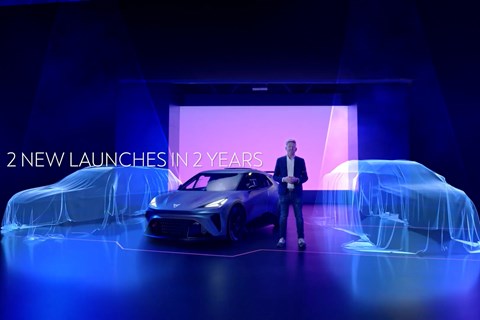
So what’s next for Cupra, and how did it get here? On this page we’ll explain Cupra’s secret for success, what you can currently buy and what will be out soon. Keep reading for everything else you need to know about Cupra.
Business
Behind the copper and the buzzwords, Cupra has a strong product portfolio suited to the new demands of the automotive industry – and the increasingly discerning consumer. Cupra products sit between Volkswagen and Audi within the VW Group, but they look unlike anything else. What’s more, Cupra’s aggressive roadmap promises more of the same formula:
‘I think because we’re small as an organisation that makes us incredibly agile,’ explains Griffiths. ‘We have great engineers and the good thing is we’re not just a manufacturing plant subsidiary, we have full function car manufacturer with our own design, our own development, increasing our own development capabilities, particularly around battery testing and things like that.’
There are links to the VW Group, used partly to keep costs down – the new Tavascan will be built in a new VW Group factory in Anhui, China, for example – but the brand uses setup and design to make them as ‘Cupra’ as possible. ‘We use some Volkswagen Group synergies – which we need to be competitive – but we certainly always have the ambition to make Cupra something very special,’ Griffiths adds. ‘Just we did with the Cupra Born in terms of setup and chassis and steering. But in terms of design, we do what we want.’

Design
Cupra’s secret sauce relies on its striking design language. Super-aggressive, every Cupra is designed to look like nothing else – other than a different Cupra: ‘When you have a past you have to keep somehow the DNA or the genetics of a brand,’ Jorge Díez, chief designer of Cupra, explains. ‘When you create a brand from scratch, you can reinvent yourself.’
In addition to aggressive cues such as the new triangular light signature rolling out across the range – the Cupra range also mix-and-matches body styles. It’s a practice present across the model portfolio, from the Formentor all the way to the DarkRebel concept shown alongside the Tavascan: ‘This is a key of Cupra as well,’ Díez agrees. ‘The Formentor is a mix of two different animals: on the lower part you have an SUV, above you have like a sleek hatchback. Take the Tavascan; you have this coupe on the back so it’s not the difficult boxy SUV, it’s much more emotional.’
Don’t expect the ‘Russian doll’ effect increasingly seen in something like the Mercedes EQ range; while a brand identity is crucial, Díez is keen to make each car stand out. ‘What we want don’t want to do is multiply or copy the same elements in all the cars. We believe that every car should have its own personality: much stronger, always with the DNA of Cupra,’ he says.
‘You will see that it’s not a scale of a big car to the small one. Everything has to have its own personality very strong, because you know, we lose the “wow effect” when you start repeating yourself. You need to innovate all the time.’
What’s for sale right now?
Ateca

Cupra has now built a foundation for itself as a standalone brand, to the point it’s even started developing bespoke. ven a few years and a facelift on, the Ateca’s still a totally sound performance SUV. Loads of grip, quick and practical. It’s a good few grand cheaper than a Tiguan R, despite being about 95 per cent the same car. Which isn’t to be sniffed at.
Read our Cupra Ateca review
Leon
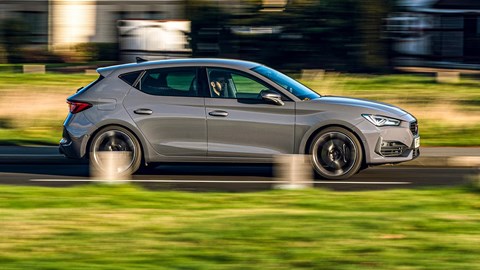
This is Cupra’s answer to the Volkswagen Golf GTE. A plug-in hybrid hatch that isn’t solely focussed on gaining you environmentally friendly points with your fleet manager. If you view the e-Hybrid as a hot hatchback that’s going to cost pennies to run, you’re going to be disappointed. But, if you approach this Cupra from the other end of the scale, as a comfortable, plug-in hybrid hatchback that occasionally uses it’s electric assistance to lighten up the mood, you have yourself a well-rounded, sporty-looking family car.
Read our Cupra Leon review

The spiritual beginning of the Cupra brand. It’s a distinctive-looking hatchback-on-stilts that will turn heads with its on-tiptoes stance and a badge none of your mates will have seen before. ? The coupe SUV concept is very zeitgeisty, and with its vast rear passenger space and big boot, practicality has not been sacrificed for style. It’s a distinctive bodystyle wrapped in a cool design, and feels well-crafted and genuinely premium.
Rear our Cupra Formentor review
Born

The Volkswagen ID.3 is a common site on UK roads, but the Cupra Born isn’t – yet. Based on the same MEB running gear as Volkswagen’s electric hatch, the Cupra ups the driver engagement, the premium feel and generally makes things a little more special.
Rear our Cupra Born review
What’s next?
Tavascan

The Tavascan will be a similar size to the already released Volkswagen ID.4, Skoda Enyaq and the Audi Q4-eTron – as it shares the same MEB platform. Our spy photographers captured ID.4 mules with Tavascan front-ends – such is the technical similarity underneath the Cupra’s more engaging styling.
However, that doesn’t mean the Tavascan will handle too much like its MEB siblings. If our extensive testing of the Cupra Born has taught as anything, it’s that calibration and chassis-tuning can make the MEB platform extremely versatile.
It’ll arrive early next year.
Read more about the Cupra Tavascan here
UrbanRebel
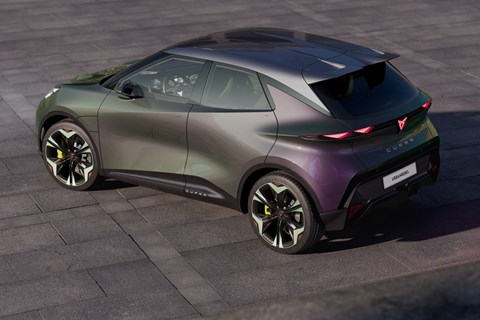
Compact, electric and front-wheel-drive, the new UrbanRebel is just 4.03m long (0.04m shorter than a VW Polo), and will sit on the Volkswagen Group’s MEB Small platform, which is expected to be deployed by Volkswagen for a future ID.2 supermini that was previewed by the ID.Life concept.
When the UrbanRebel does launch in 2025 it’ll be named after a town in Spain like the rest of the range. Production should take place in Martorell, Spain.
Read more about the Cupra UrbanRebel here
Terrarmar
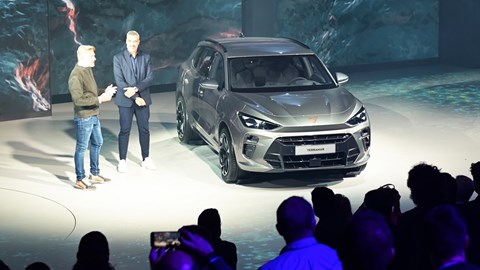
The Terramar is a sport SUV from Cupra that should appear around 2024. The largest car yet from the Seat spin-off, it’ll use hybrid – not pure electric – power, and be built in Audi’s Gyor plant.
At 4.5 metres long, the Terramar will be the largest Cupra on sale, nudging just ahead of the Formentor. It features the same shark-like design as seen in the rest of the range. Like the new models revealed alongside it, the new Terramar features full-width brake lights at the rear, and a distinctive triple-triangle headlight signature at the front.
It’ll arrive in 2025.
Read more about the Cupra Terramar here
DarkRebel
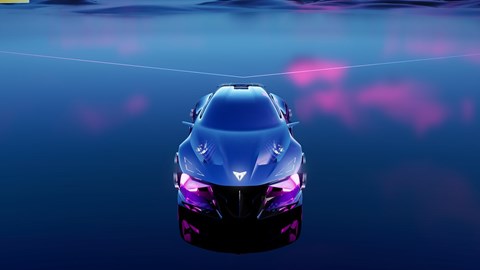
Unveiled in just digital form for now, the DarkRebel represents the next step of Cupra design. A 2+2, shooting-brake hybrid, it’s the most extreme concept we’ve seen from the brand yet – but production isn’t out of the question. ‘My designers are not allowed to just go crazy out of the box and do the flying saucers and things like this,’ says Griffiths. ‘It has to be a car afterwards it has to have a possible platform. It has to have the possibility of being executed as a project in terms of package and availability of technology.’
‘We would only show things that could be feasible in terms of technically feasible, but you also need financial feasibility,’ he warns after the presentation. ‘And the project of this size for the limited value that you’re going to do in this segment with the coupe [segment] or even if you were to do an open version is limited. However, in the electric world, there aren’t that many competitors there…’
Read more about the Cupra DarkRebel here
What about Seat?
Cupra’s parent brand has been quiet for a few years now, but CEO Griffiths maintains it’s down to the semiconductor shortage: ‘We decided to prioritise Cupra and that unfortunately had a negative effect on Seat,’ Griffiths admits. ‘We need to reduce volumes because our total volume is reduced because of lack of semiconductors, but we must stay profitable as a company. We made that decision and also to protect Cupra; you can’t launch a new brand and then not deliver. That would be a real flop, so we couldn’t do that.
‘It’s certainly not the lack of demand,’ the CEO maintains when talking of Seat’s figures. ‘Our level of demand for Seat is higher than ever been. Not only is Cupra growing exponentially, Seat is also coming back to where it was at a strong rate.’
It appears that Cupra has become the beating heart of Seat in many ways, with the new marque giving the larger company the mandate to quickly retool and adapt for the electric age: ‘Cupra will help Seat, it will give it a future with electric cars from 2025 onwards. Cupra allowed us to electrify Seat as a company much earlier than I would have ever dreamed of,’ Griffiths concludes.